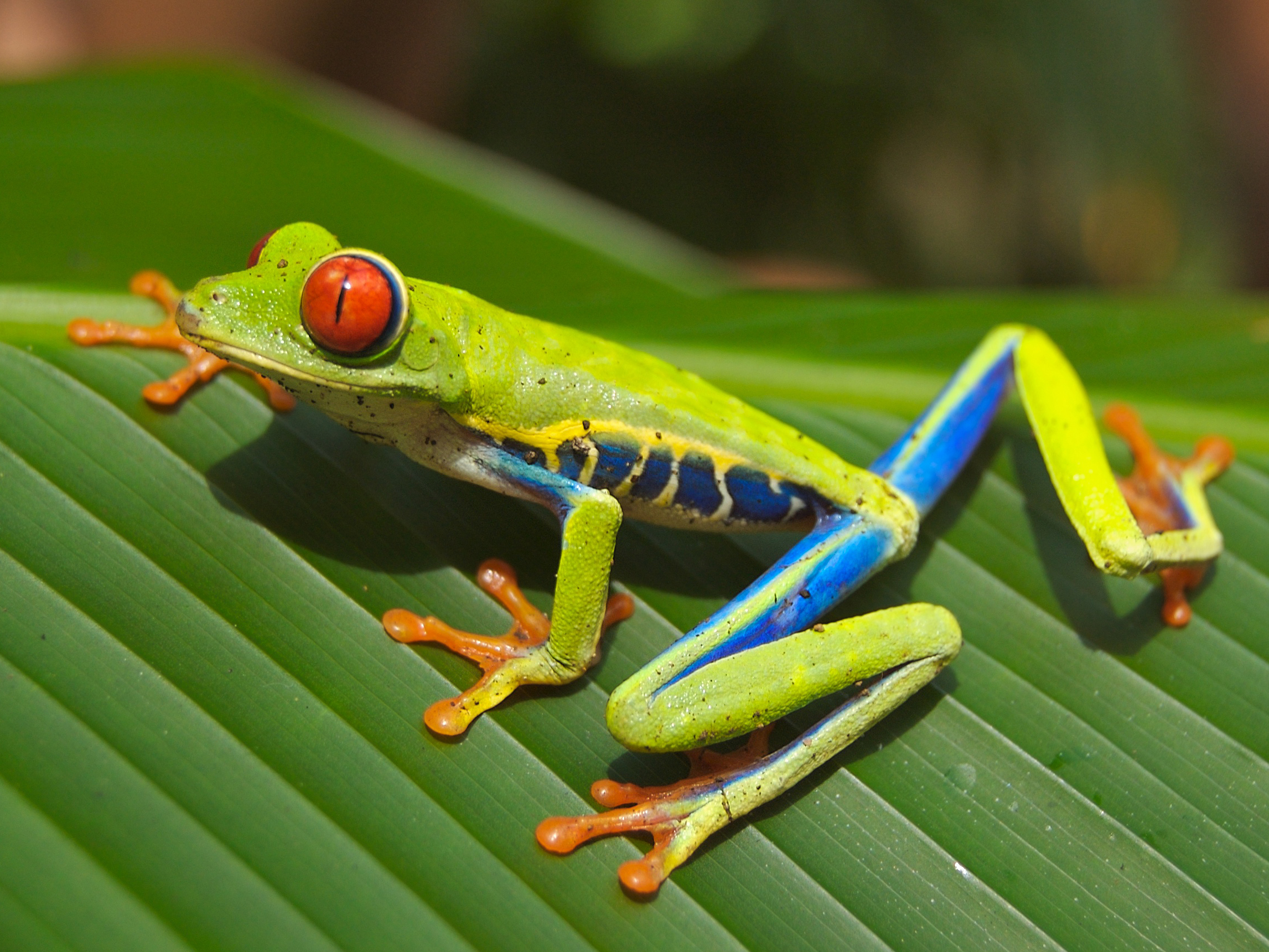New species form as populations evolve differences that prevent them from interbreeding. Sometimes, the evolving differences themselves help to accelerate the process — especially differences in traits involved in attracting or finding mates. The path to speciation is a twisty one, however, as CSUN biologists have discovered in an extensive new study of colorful tree frogs.
The project, led by Master’s graduate Florine Pascal, examined a hybrid zone between Central American populations of the red-eyed tree frog with dramatically different coloration — the southern population have bright red patches on their legs, and the northern population are blue. The red- and blue-legged populations are genetically distinct, but where they come into contact in western Costa Rica, there are populations of frogs with mixed genetics, and leg coloration that varies from deep purple to bright red. With collaborators at AMBICOR in Costa Rica and Colorado State University, as well as Master’s alum Maria Akopyan and her thesis advisor, CSUN Professor of Biology Jeanne Robertson, Pascal sampled frogs across the hybrid zone to see whether their coloration contributed to reproductive isolation between the red- and blue-legged parental populations.
Across five sites in the hybrid zone, the team found that genetic markers did not cleanly differentiate the northern blue-legged type from the southern red-legged type. Moreover, there was little evidence that frogs of different colors avoided mating with each other in the hybrid zone sites — pairs of frogs found mating were not more similar in coloration than would be expected by chance, given the coloration of the large population. In fact, there was some evidence that females of all colors preferred redder males across the contact zone: males found mating in the in the contact zone sites had more red coloration than the average for the contact zone populations.
It may be, the authors conclude, that the bright color differences across the hybrid zone are not involved in mating preferences — or only one of multiple factors that determine how the frogs pair to mate. The genetic differences between blue-legged, red-legged, and mixed populations are consistent with fairly free hybridization along the line of study sites, so whatever differences the parental populations have evolved, these frogs are still a ways from full differentiation.
The full article is available on the journal website.
Featured image: A red-eyed tree frog with bright blue flank and leg coloration (Wikimedia Commons, Carey James Balboa).

